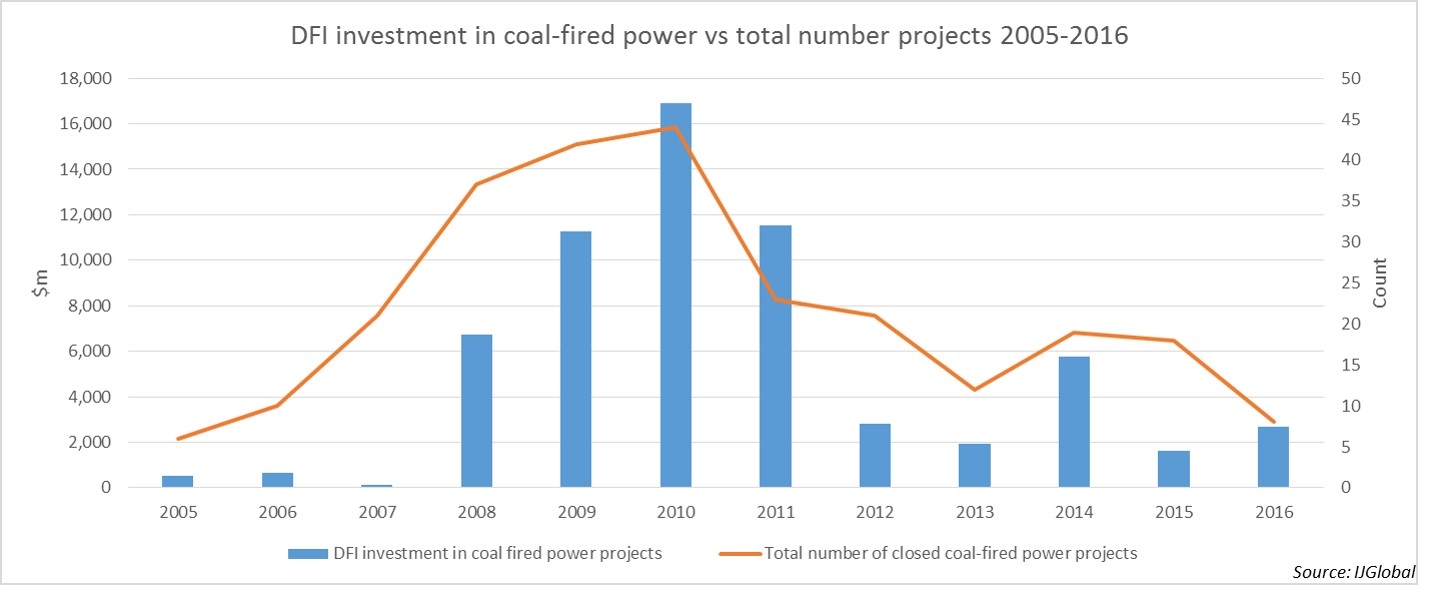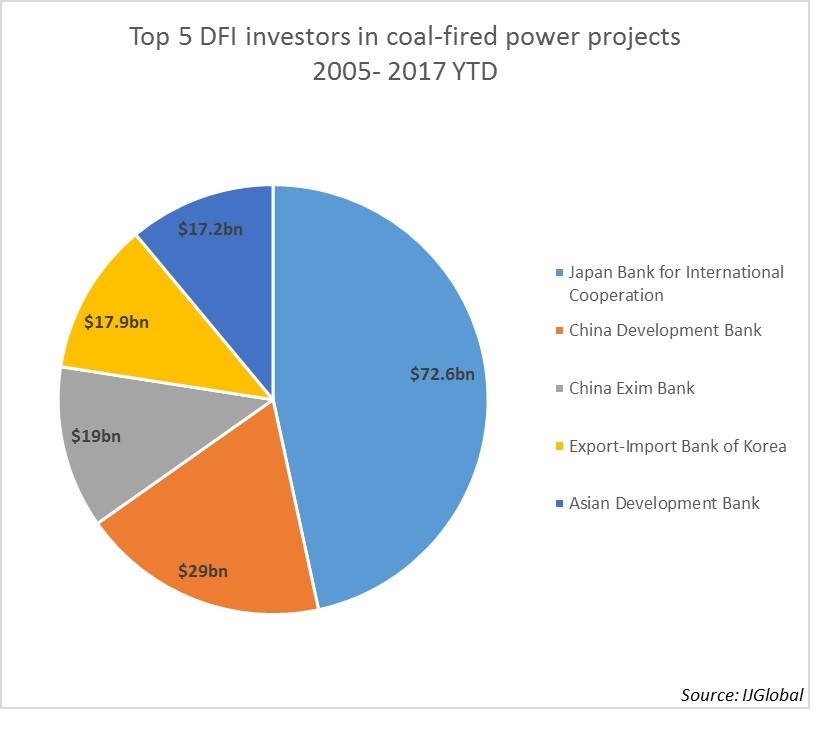Multilaterals say no to coal
As much of the world moves towards a low-carbon energy mix China’s Asian Infrastructure Investment Bank (AIIB) has announced that it will limit its investment in coal-fired power projects. The move is representative of a global trend of multilateral development banks moving away from coal.
The total value of investment from development finance institutions into coal-fired power has been on a steady decline since 2010, with just $2.7 billion invested in privately financed coal fired power projects in 2016, according to IJGlobal data. This compares to $16.9 billion in 2010 when DFI investment in coal was at its peak.
Many coal dependant nations in Asia had hoped that the AIIB would fill the gap left by the others.
The Asian Development Bank, one of the top five DFI investors in coal-fired power since 2005, said in 2009 that it would only invest in coal-fired power projects that use high-efficiency and low-emissions technologies. And in 2011 the World Bank said it would restrict its investment in coal-fired power to very rare circumstances.
Coal-rich Australia, a founding member of the AIIB, was hoping for a more lax view to coal from the AIIB, and still hopes that the bank’s stance will be modified. According to IJGlobal data, Australia has closed 18 new coal mining or coal-fired power projects since 2005 with a total value of $15.7 billion.
Indonesia and India were had also hoped that the AIIB would finance coal projects in their countries.
While the multilaterals have moved away from financing coal-fired power Asian Export Credit Agencies have remained a source of funding. Japan Bank for International Cooperation (JBIC) is the biggest lender. JBIC provided over 50% of the $3.4 billion debt package on the Central Java coal-fired power plant in Indonesia last year.
As multilaterals retreat will sponsors of coal-fired power have to rely on ECA funding for any new projects?
Request a Demo
Interested in IJGlobal? Request a demo to discuss a trial with a member of our team. Talk to the team to explore the value of our asset and transaction databases, our market-leading news, league tables and much more.




